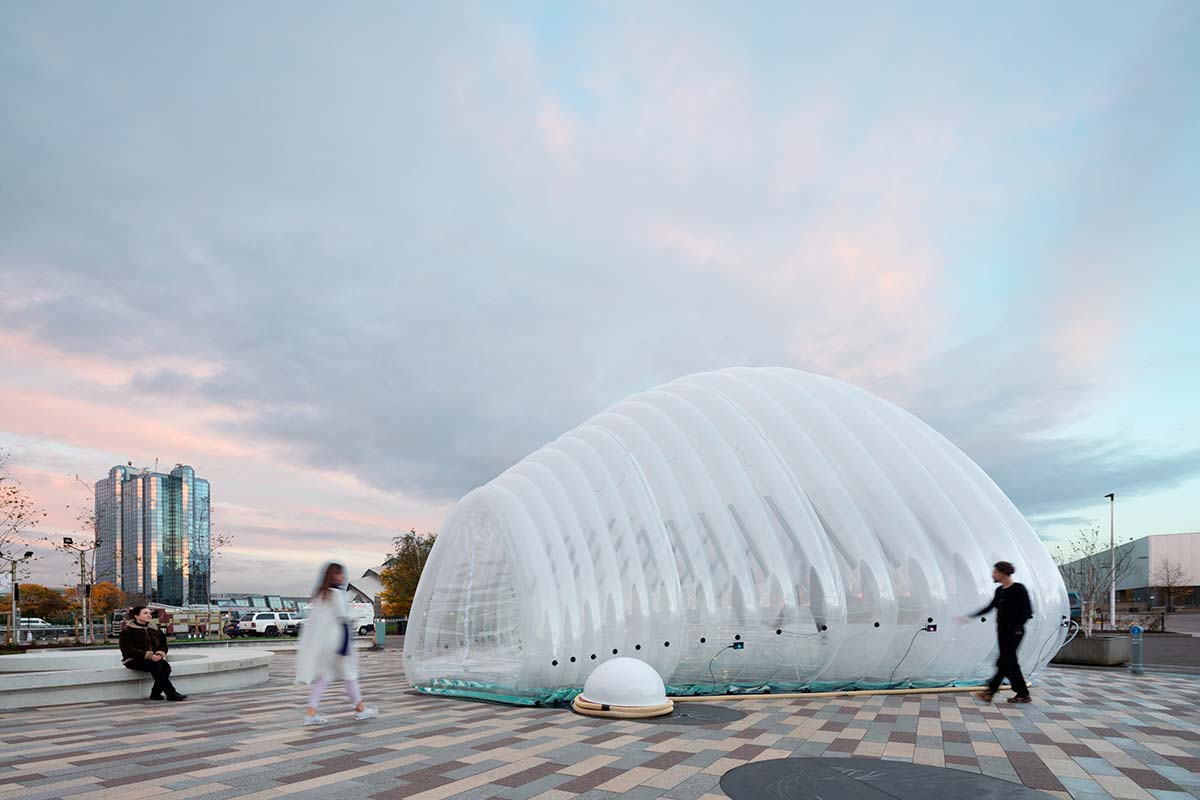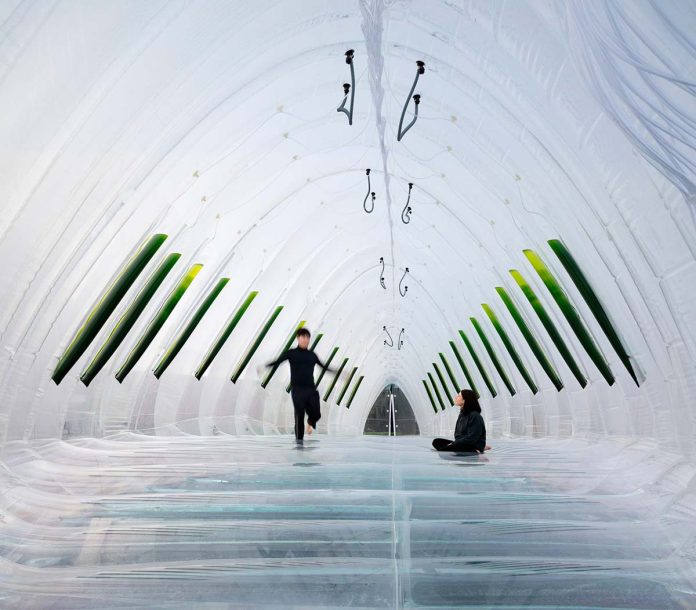Two projects presented during the COP26 conference in Glasgow, Scotland, with a single goal: to contribute to achieve “zero emissions” by the mid-century mark, protecting and – if possible – regenerating the planet’s ecosystems.
The devices, both created by the studio of architecture and innovation helmed by Claudia Pasquero and Marco Poletto, ecoLogicStudio, are an eco-machine for air purification, the Air Bubble – developed in collaboration with Otrivin® – and the BioFactory system featuring the PhotoSynthetica technology patented by the studio in 2018.

Composed up to 99% by air, water and Chlorella micro-algae, the plant richest in chlorophyll, the substance that enables photosynthesis and thus air purification, Air Bubble demonstrates how advanced coordination between construction and biotechnology can lead to a new generation of “living architecture” in which beauty is combined with ecological efficiency. “With the Air Bubble eco-machine for air purification, beauty becomes a true measure of ecological intelligence,” says Claudia Pasquero, professor of bio-digital architecture at UCL and UIBK and co-founder of ecoLogicStudio.
The Air Bubble has been installed in front of the Glasgow Science Centre in the so-called Green Zone of COP26, and encourages visitors, especially kids, to directly interact, experiencing the air cleansing effects of the micro-algae, by entering a bubble of freshly metabolized oxygen.

Again relying on algae inside a membrane covering, BioFactory sets out to revolutionize the sector of industrial architecture. The first pilot project has been installed in Lisbon, Portugal, at the central headquarters of Nestlé: micro-algae that feed on the CO2 emissions of the factory are cultivated inside photobioreactors. The gathered biomass then enters the factory’s supply chain to become a renewable and sustainable raw material for food products and packaging at zero emissions. A circular process that changes the rules of efficiency and makes bio-factories capable of supplying themselves.
And there’s more: the adjustable and intelligent shading system promotes the entry and use of natural light, boosting psychological wellbeing of employees while stimulating a creative approach to work.







